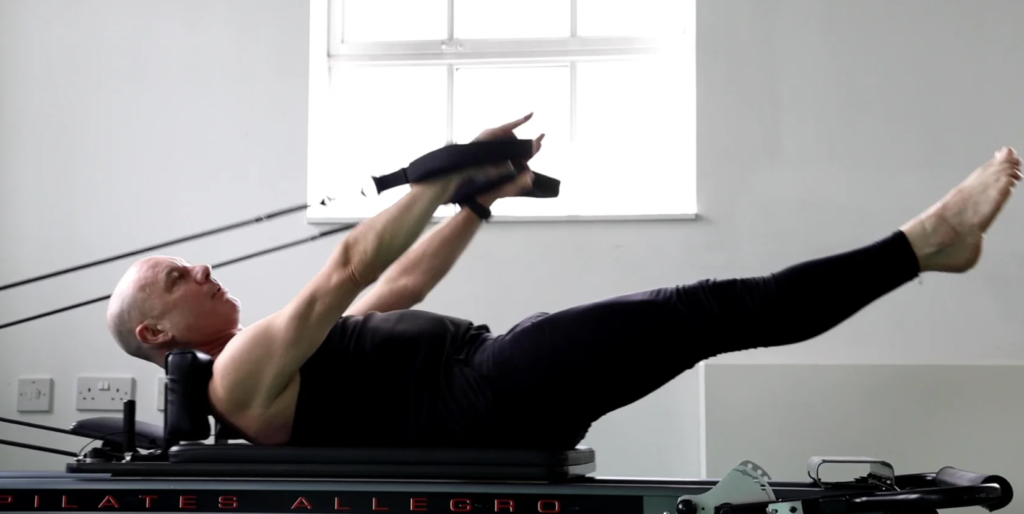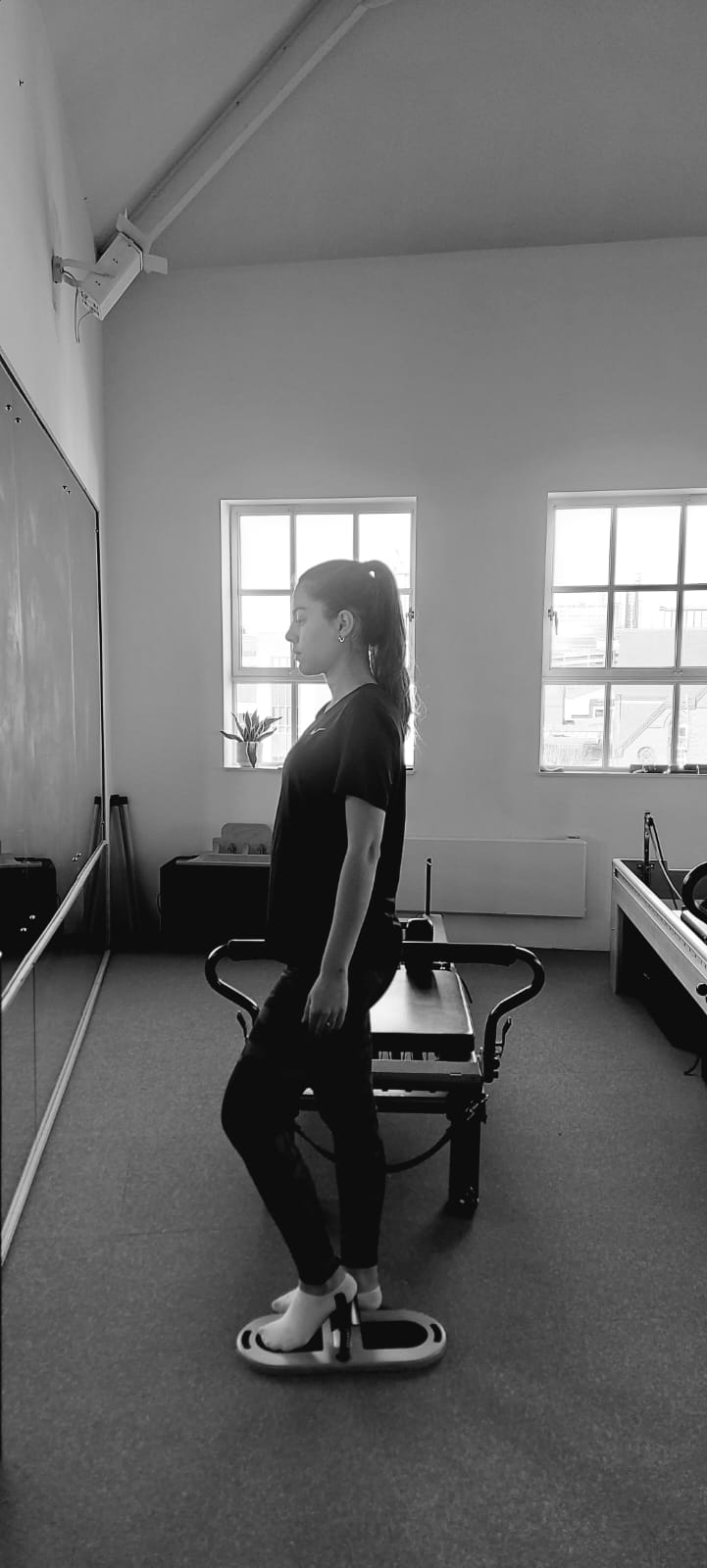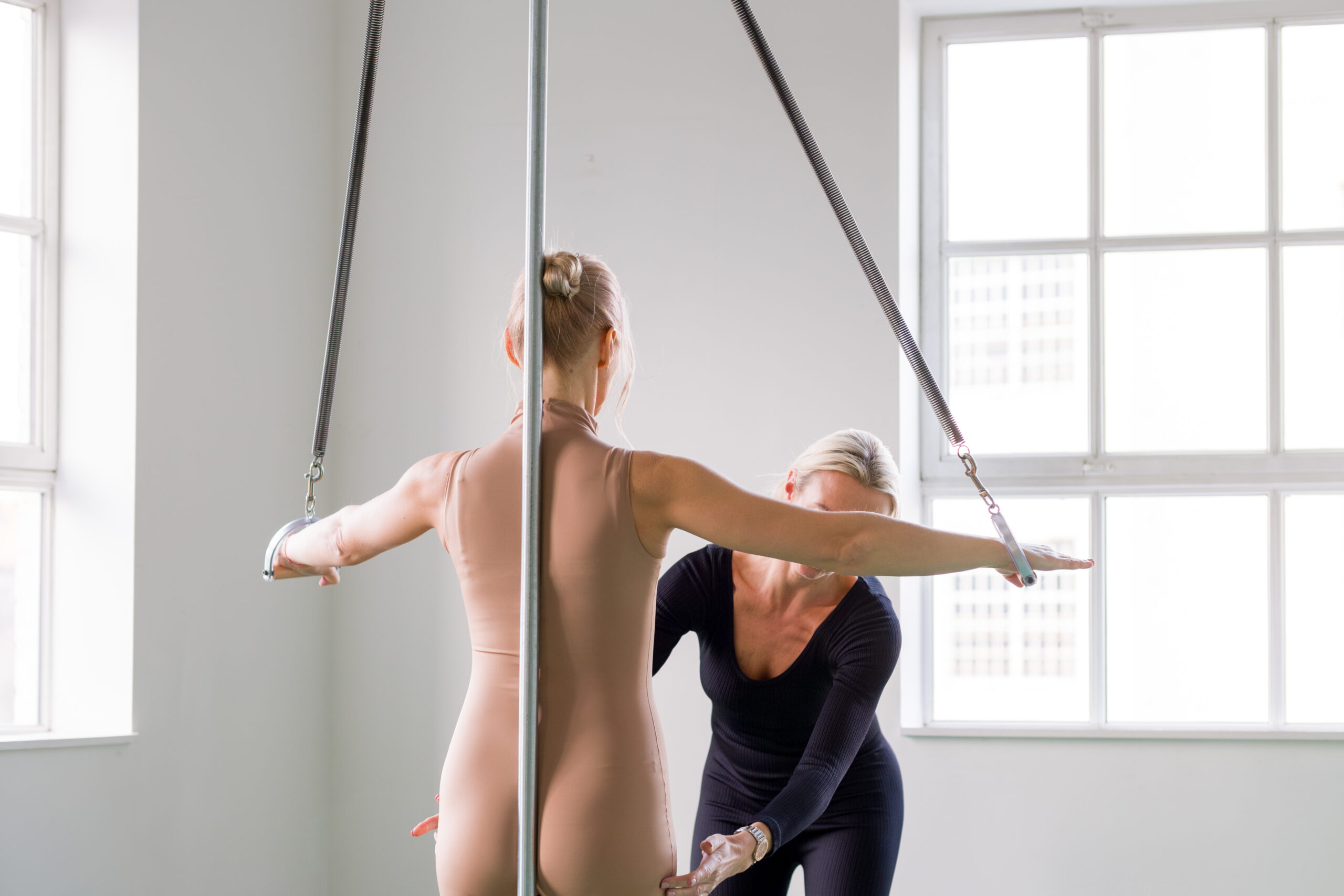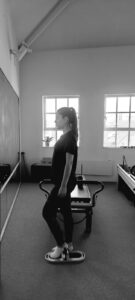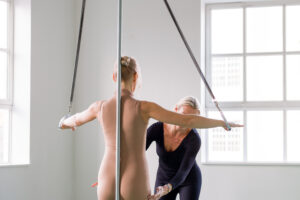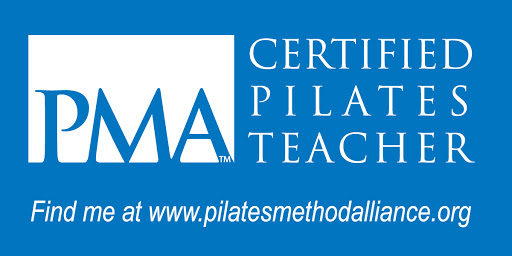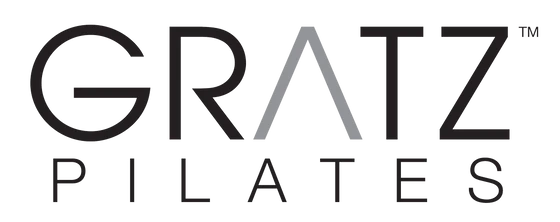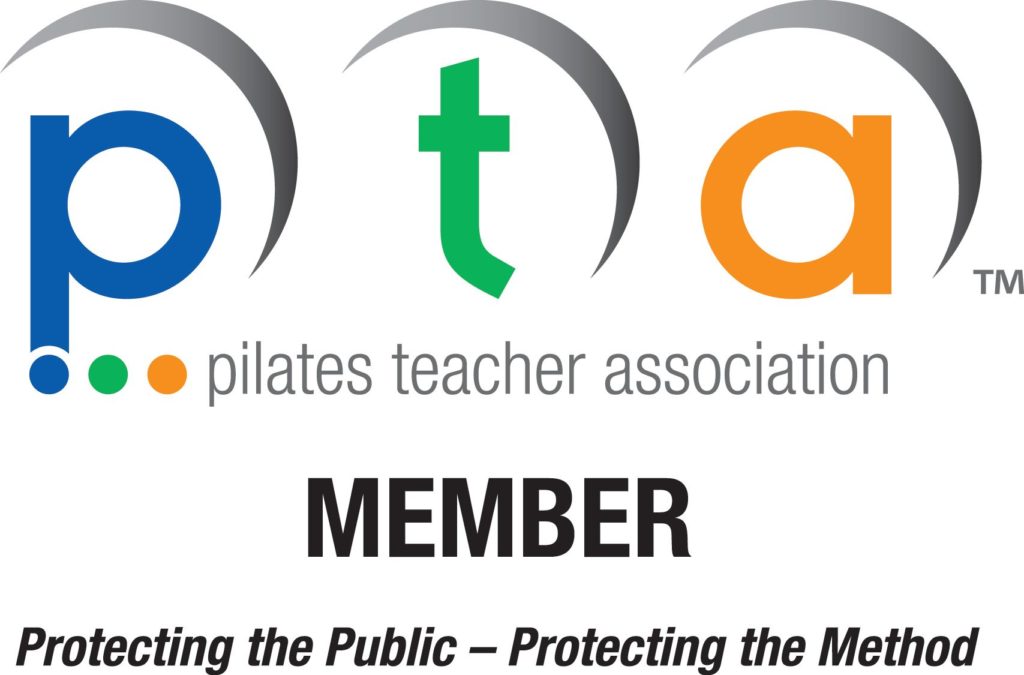Reformer One Hundred
– This is the version of the Mat exercise but on the Reformer – empties your lungs (and fills them again), moves the blood and warms the body for the rest of the workout…
According to Reiner ~Grootenhuis, the One Hundred was called the “Stretch – Pull” and there was no pumping of the arms. Instead, the arms were brought all the way down to the carriage.
What’s One Hundred good for?
- It’s the Pilates warm up for the body
- There is a focus on breathing and emptying the lungs completely of air – though of course this is totally impossible!
- Strengthens the whole of the abdominals, deep hip flexors, inner thighs and butt.
Set Up of the Exercise Series
Transition
You’ve just finished of the Footwork Series so you’re lying on the carriage, face up.
On a contemporary Reformer, roll (or Teaser up) up and spin around in order to put the football down . On a classical Reformer you can just use your feet to put the footbar down.
Set Up
- Create a small space between your shoulders and the shoulder rests.
- Your legs are down, resting on the footplate and stretched out straight.
- Your feet create a small V shape and are pointed out and away from you.
- Sqweeze the inside of your legs and butt.
- Holding the straps or the handles, reach your arms upwards to vertical.
- The straps are in tension but the springs are closed.
The Movement
- Draw your belly button inwards and upwards.
- Roll up your head and chest to the bottom tips of your shoulder blades.
- As you’re doing this, squeeze your inner thighs and your butt to lift your legs up so that your lower spine lies flat on the carriage. Your feet should be at least eye level.
- In this position, begin pumping your arms. They should be higher than your legs and hands reaching into the straps all the handles. Note to self :-)…
- The radius of the pumps should be a radius of about 15 to 20 cm
- Pump five times as you exhale and without stopping, pump five times as you inhale.
- Repeat until you’ve completed one hundred pumps.
Hints and Tips
- Keep your upper body up during the exercise – don’t allow it to sink down.
- Keep squeezing your legs and maintain the external rotation from the hip to do this squeeze your butt.
- Roll up your shoulders rather than pushing forwards with your head.
- Reach into the straps don’t allow your arms to bend.
- Keep your arms above your legs and with a good range of movement again 15 to 20 cm.
- The breathing is to be controlled and slow but to avoid hyperventilating.
Modifications & Variations
- Bring your legs into a tabletop position then stretch them upwards to 12 o’clock. From theer, lower your legs down in a controlled manner as fa as you cann as you can keeping your lower back connected to the carriage.
- If your abdominal muscles are not strong enough to lift up your upper body away from the porridge you can use the shoulder rests to help support your shoulders in an elevated position.
- Try this: perform the first 50 pumps with your arms then perform the second 50 pumps with beats of the legs or fast leg crossings as in Ballet. Whilst doing this, keep the Pilates V shape and touch your heel just in front of your opposite ankle. I believe this is called the third and fifth position in Ballet.
Precautions
- If you suffer from osteoporosis keep your head down instead of lifted.
- If you suffer from cervical spine problems prolonged staying in this position for an extended period of time can intensify your problems. Try other exercises to get stronger abdominals and shoulders to take the strain of your neck.
- You can try the exercise on the Step Barrel is you suffer with neck pain or strain.
- If you upper spine isn’t sufficiently rolled up or to compensate you’re pushing your head forwards you can strain your neck muscles specifically the sternocleidomastoid muscle.
- If your lower back is lifting up off the mat this shows that your abdominal muscles are not sufficiently supporting your spine this can cause overloading of the lower spine try the exercise in tabletop position until you get sufficient strength.

